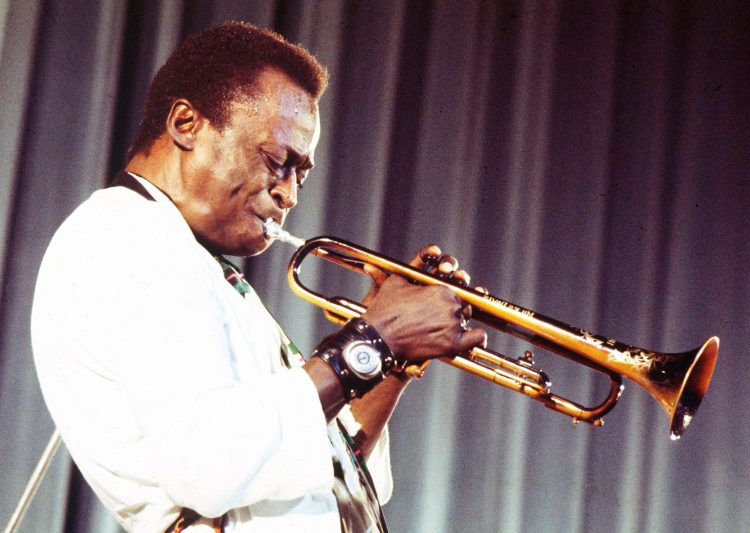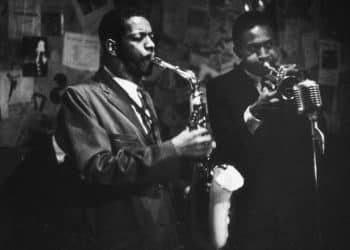Miles Davis is widely regarded as one of the most influential and innovative musicians in the history of jazz. His career spanned over five decades, during which he constantly pushed the boundaries of the genre, experimenting with new sounds and techniques, and collaborating with a wide range of talented musicians. Davis was a true visionary and his impact on the world of music cannot be overstated.
In this list of the 10 Best Miles Davis Songs of All Time, we will explore some of his most iconic and groundbreaking works, from the classic jazz standards to his groundbreaking fusion experiments. These songs showcase Davis’ incredible musicianship, his ability to create emotive and complex compositions, and his willingness to take risks and explore new territory. Whether you are a die-hard jazz fan or a casual listener, these songs are sure to impress and inspire.
1. So What
“So What” is a classic jazz tune composed by Miles Davis and featured on his iconic album, “Kind of Blue.” Released in 1959, this track is notable for its use of modal jazz, a style that departs from traditional chord progressions and instead focuses on a scale or mode. “So What” features a distinctive bass line and trumpet melody, with solos by saxophonist John Coltrane and pianist Bill Evans. The song’s relaxed and cool vibe has made it a favorite among jazz fans and musicians alike, and it remains one of the most influential and widely recognized jazz standards of all time.
2. Kind of Blue
“Kind of Blue” is the title track from Miles Davis’ legendary 1959 album, often regarded as one of the greatest jazz recordings of all time. The song is a masterful example of Davis’ approach to modal jazz, with its emphasis on improvisation and free-flowing melodies over a set chord progression. The track features an all-star lineup of jazz musicians, including John Coltrane on tenor saxophone, Julian “Cannonball” Adderley on alto saxophone, and Bill Evans on piano, among others. Davis’ trumpet work on “Kind of Blue” is both understated and commanding, showcasing his virtuosic playing and unique sense of phrasing.
3. All Blues
“All Blues” is a jazz standard composed by Miles Davis and appears on his legendary 1959 album “Kind of Blue”. The song is known for its laid-back bluesy groove, featuring a memorable bassline and a simple yet effective melody played by Miles Davis on his trumpet. The song’s structure consists of a 12-bar blues progression, but with a unique twist, as each section of the progression is stretched out to last for eight bars instead of the typical four. This allows for a more spacious and improvisational approach to the solos played by the musicians.
4. Freddie Freeloader
“Freddie Freeloader” is a jazz standard composed by Miles Davis and included in his iconic album “Kind of Blue.” The song is a laid-back blues that showcases Davis’ understated trumpet playing and the virtuosity of the ensemble, which includes John Coltrane, Cannonball Adderley, and Bill Evans, among others. The track is notable for its memorable melody and the tasteful solos of the musicians, who build upon the simple harmonic structure of the piece to create a rich and intricate musical tapestry.
5. Blue in Green
“Blue in Green” is a hauntingly beautiful instrumental jazz composition, originally recorded by Miles Davis for his seminal 1959 album “Kind of Blue.” The song features a slow, melancholic melody that is carried by Davis’ muted trumpet and complemented by Bill Evans’ delicate piano work. The track’s serene and introspective mood is further enhanced by the use of modal jazz, a style that emphasizes musical modes rather than chord progressions. “Blue in Green” has since become one of Miles Davis’ most beloved and enduring compositions, and has been covered by countless jazz musicians over the years. Its wistful and evocative qualities continue to captivate listeners to this day.
6. My Funny Valentine
https://www.youtube.com/watch?v=tJaRQ8F_CIs
“My Funny Valentine” is a classic jazz standard originally written by Richard Rodgers and Lorenz Hart for the 1937 musical “Babes in Arms.” Miles Davis recorded his version of the song in 1956 as part of his album “Cookin’ with the Miles Davis Quintet.” Davis’ version is a slow and melancholic ballad that showcases his ability to express deep emotions through his trumpet playing. The song has been covered by numerous artists over the years and has become a jazz classic, with Davis’ version being considered one of the most iconic.
7. Bitches Brew
“Bitches Brew” is a landmark jazz-fusion composition by Miles Davis, released in 1970. The album is known for its experimental and avant-garde style, blending elements of jazz, rock, funk, and world music. The title track, which is over 27 minutes long, is a prime example of the album’s unique sound, featuring improvisational solos layered over an ever-changing rhythmic structure. Davis utilized a large ensemble for this recording, including musicians such as Wayne Shorter, Chick Corea, and John McLaughlin, who each bring their own distinctive sound to the mix. ”
8. ‘Round Midnight
“Round Midnight” is a jazz standard written by pianist Thelonious Monk. However, Miles Davis’ rendition of the song has become a timeless classic. Davis’ trumpet solo on this track is considered by many as one of his greatest performances. The song showcases Davis’ ability to play beautifully and melodically, while still taking risks with his improvisation. His use of space and phrasing on this track is masterful, making it a standout in his extensive catalog. Davis’ interpretation of “Round Midnight” is hauntingly beautiful, and his use of muted trumpet adds to the melancholic mood of the piece.
9. Miles Runs the Voodoo Down
“Miles Runs the Voodoo Down” is a fusion jazz masterpiece by Miles Davis, released on his 1970 album “Bitches Brew.” The track features an avant-garde sound that blends electric guitar, bass, keyboards, drums, and horns, with Davis’s iconic trumpet playing at the forefront. The song is known for its hypnotic and repetitive groove, which draws the listener in and takes them on a journey through a soundscape of improvisation and experimentation. Davis’s use of electronic instruments and unconventional rhythms was groundbreaking and had a significant influence on the development of jazz-fusion and experimental music.
10. Flamenco Sketches
Flamenco Sketches” is a beautiful and evocative jazz piece by Miles Davis. It’s a slow, introspective track that showcases Davis’ lyrical and expressive playing style. The song is structured around a simple, repeating chord progression, over which Davis and his bandmates take turns soloing and improvising. The result is a haunting, atmospheric composition that feels both melancholic and hopeful. The track is notable for its use of modal jazz, a technique in which the musicians improvise over a series of scales rather than a fixed set of chords. This gives “Flamenco Sketches” a dreamy, impressionistic quality that sets it apart from other jazz standards.








